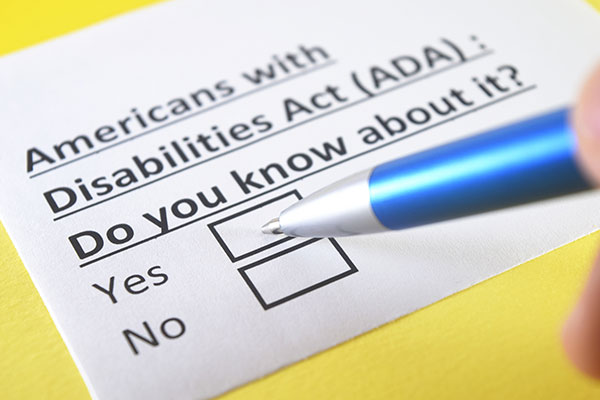As people become increasingly reliant on the internet for information and commerce, it is more important than ever that websites be accessible for all. ADA compliant websites that are optimized for everyone, including people with visual challenges and other disabilities, are becoming the standard. At SILVR, we are thrilled when a well-designed website can reach as many people as possible and we are committed to assisting our clients with ADA accessibility.

The Americans with Disabilities Act (ADA) was put into place by the American government in order to prohibit discrimination against people with disabilities. The protections afforded by the ADA include the right to purchase goods and services. When the ADA was passed in 1990, the burgeoning internet had not yet reached a place in the everyday lives of most Americans. While websites are not mentioned explicitly in the original language of ADA, experts are in agreement that website accessibility is important. The Web Content Accessibility Guidelines (WCAG) are generally accepted as the standard for ADA compliance in websites.
Information must be viewable by people with disabilities. Elements that support this include high-contrast text, captions, and text alternatives for images.
Pages are navigable using a keyboard and any time limits are easily extended. Any flashing or animation should be designed to not trigger seizures and, whenever possible, have an option to be turned off.
Language should be easily identifiable by screen reader tools and functionality should be consistent. Forms should be intuitive and easy to navigate.
Site content should be kept updated to be compatible with advances in assistive technologies.
These principles form the foundation of an accessible and compliant website, and represent a broad overview of the guidelines that make up website accessibility. There are a number of design elements and technical considerations that go into creating or updating a website to be ADA compliant. Read the Full Web Content Accessibility Guidelines.

The Web Accessibility Evaluation Tool called WAVE can help you determine if your website is accessible to users with disabilities. There are many components to consider, and the best way to ensure your site is compliant is to hire an agency with experience in creating accessible websites. A few of the features that should be included in your site are:
There are many reasons to make sure your website is ADA compliant, whether you are the owner, the person responsible for marketing, or the website administrator of your business. Reasons to follow best practices for website accessibility include:
The dream team at SILVR includes experienced designers and knowledgeable developers who can help you build brand awareness, share your message, and grow your client base with an accessible website. We offer a full range of digital marketing services with a specialization in creative and effective strategies for medical practices. Contact us today with any questions or for a free evaluation.